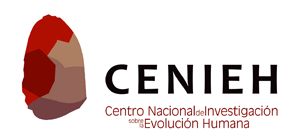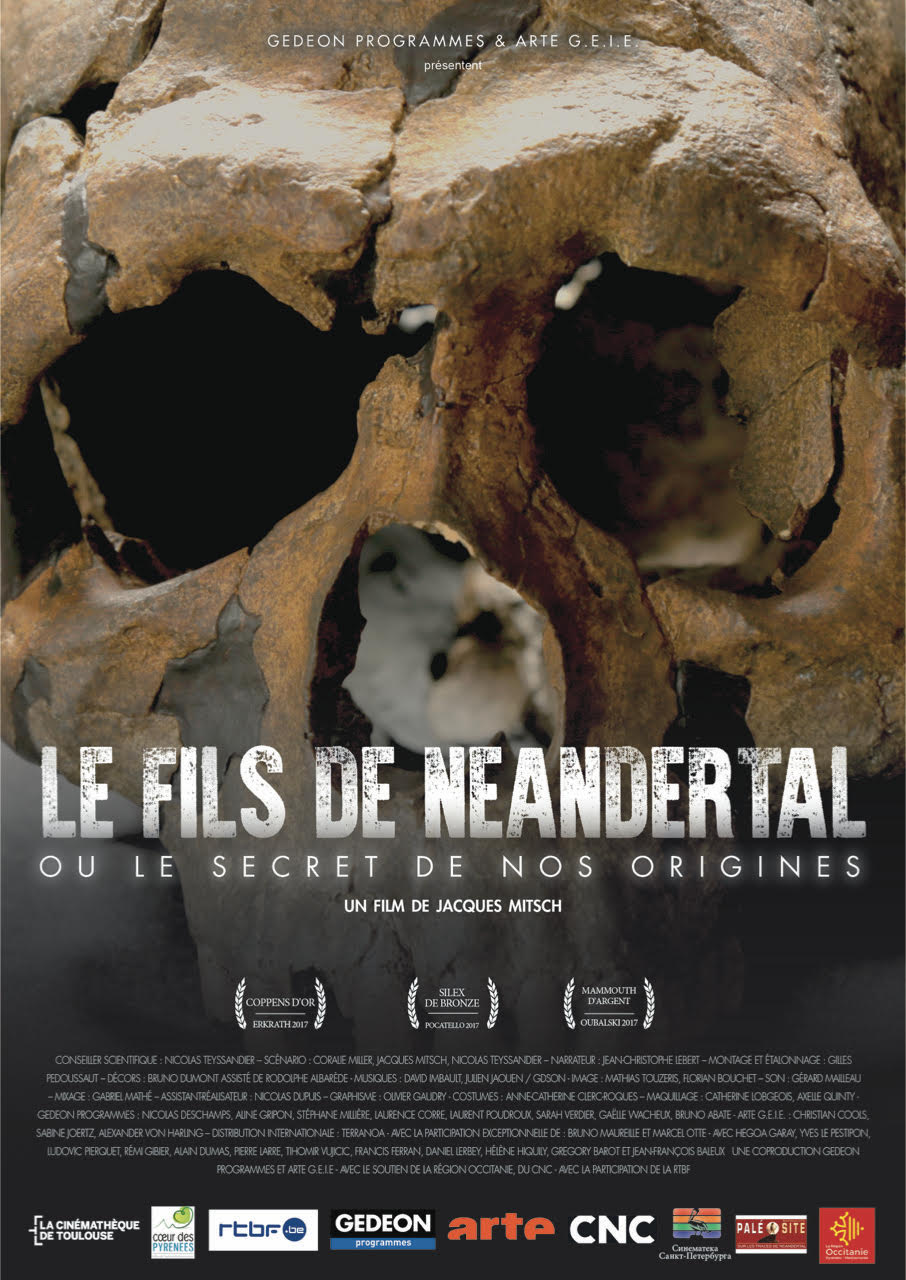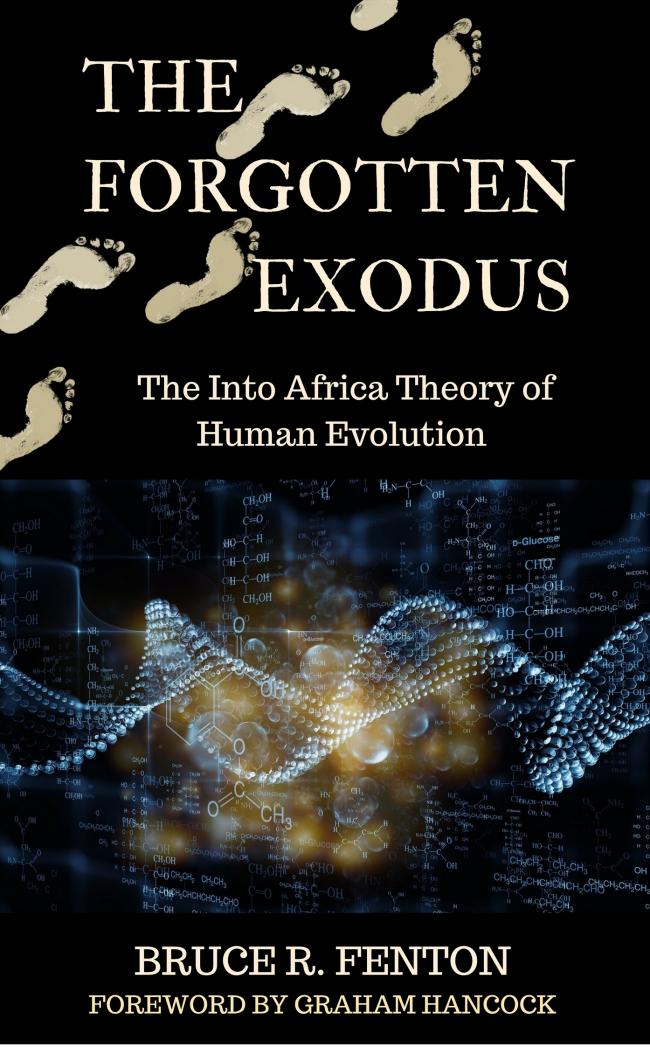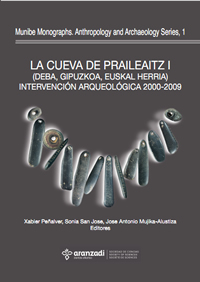domingo, 16 de abril de 2017
Paralizan la elección del director del Cenieh
La impugnación de dos de los integrantes del comité de selección se elevara al consejo rector del centro para que emita un dictamen
La eleccion de director del Centro Nacional de Investigación sobre la Evolución Humana (Cenieh) esta paralizada desde que hace aproximadamente un mes uno de los candidatos remitiera un escrito de protesta impugnando a dos de los integrantes del comité de selección. Desde la Secretaría de Estado de I+D+i confirman que el proceso está paralizado hasta que el Consejo Rector del Cenieh resuelva esta medida de protesta elevada por uno de los aspirantes a la dirección del centro.
La queja procede de Manuel Santonja, actual Coordinador de Programa de Investigación Arqueología Económica y Espacial y responsable de las excavaciones en uno de los yacimientos de la Garganta de Olduvai (Tanzania). En su escrito apela a la falta de imparcialidad de uno de los integrantes del comité de selección, el codirector de Atapuerca, Juan Luis Arsuaga, alegando que públicamente ya se ha decantado por otro de los aspirantes, miembro de equipo de investigación de Atapuerca. Por otro lado, la queja también recae en que la plaza asignada a la Universidad de Burgos, socio en un 2% del Consejo Rector. Explica que su representante, el vicerrector de Investigación y Transferencia, José Miguel García Pérez, por ser físico y no especialista en el área de la palentología requisito que se especificaba en la convocatoria de la plaza. [...] El Correo de Burgos
Noticia relacionada
sábado, 15 de abril de 2017
"Premier homme", le documentaire diffusé sur M6 qui veut redéfinir l'histoire de l'être humain
Coécrit par le paléoanthropologue Pascal Picq, le film évoque notamment Pierola et Toumaï, deux ancêtres d'homo sapiens.
04/04/2017 - AFP. Un docu-fiction ambitieux, "Premier homme", sur M6 ce mardi 4 avril à 21h, entend actualiser l'histoire de nos origines, "plus anciennes" que ce que l'on croyait, selon le paléoanthropologue Pascal Picq, coauteur du scénario.
Le film "Premier homme", réalisé par Frédéric Fougea et Jérôme Guiot sous la direction scientifique de Pascal Picq, multiplie effets spéciaux et maquillages dignes d'Hollywood afin d'apporter "tous les éléments de reconstitution de la vie de nos ancêtres, beaucoup plus riche qu'on imaginait".
"Nous sommes tous très marqués par notre culture théologique et philosophique qui a ancré l'idée dualiste complètement fausse, 'l'homme et le singe'", dit à l'AFP Pascal Picq, [...] huffingtonpost.fr / Link 2
Vidéo: «Premier Homme» : le film qui bouleverse l'histoire de nos origines - LeFigaro
Ver en PaleoVídeos > L.R.2.12 nº 36.
Actualización: CuriosityStream Film ’First Man’ Reveals Deep History of Our Origins in Epic New Docu-Drama
Who are we? Where did we come from? What makes us human? First Man, premiering today on CuriosityStream, takes viewers on a journey back 25 million years to explore the ancestral roots of man at the time of the great apes. Featuring stunning cinematography and incredibly realistic and accurate portrayals, First Man follows the story of one primate tribe with exceptional skills, highlighting the social, cultural and biological constructs that shaped their evolution into modern man....
Ver vídeo First Man en PaleoVídeos > L.R.2.13 nº 23.
Etiquetas:
video 2
Lasting effects of Neandertal DNA on gene expression in modern humans
Approximately 2% of the DNA in the genomes of modern humans of non-African descent comes from Neandertals and recent studies have shown this DNA contributes to a number of phenotypes. New research published today Genome Biology looks at introgressed archaic DNA and explores the extent to which it influences modern human phenotypes.
3 Apr 2017. A major insight that emerged from comparing the Neandertal and Denisovan genomes to the genomes of modern humans was that the ancestors of all modern non-Africans met and interbred with archaic humans approximately 55,000 years ago. As a result, approximately 2% of the DNA in the genomes of all non-Africans comes from Neandertals, and in addition about 5% of the genomes of present-day Oceanian people can be traced back to the Denisovans.
A number of recent studies have addressed whether this archaic DNA contributes to phenotypic variation in modern humans. [...] On Biology
* Vídeo añadido a PaleoVídeos > L.R.2.12 nº 35.
Entrada relacionada / Related post
Etiquetas:
video 2
Un nouveau musée de Préhistoire en Mayenne
Installé au cœur de la vallée des grottes de Saulges, le musée de Préhistoire a ouvert ses portes le 18 mars 2017.
Avec sa vingtaine de grottes creusées dans le calcaire carbonifère datant de 300 millions d’années, Saulges est un site unique dans le Massif armoricain.
Situé aux portes du Pays d’Art et d’Histoire Coëvrons-Mayenne, le musée rassemble les collections du département de la Mayenne, des musées de Laval et de la Communauté de communes des Coëvrons. Avec des objets issus principalement du site de Saulges pour le Paléolithique et de la Mayenne pour le Néolithique, cet espace muséographique est le point d’entrée pour la découverte de la Préhistoire en Mayenne. [...] Inrap
* Vídeo añadido a PaleoVídeos > L.R.2.12 nº 34.
Le fils de Neandertal ou le secret de nos origines - ARTE+7
Pour le 1er avril, ARTE s'est permis un peu d'humour avec ce docu-fiction qui retrace la découverte de la sépulture d’une femme Sapiens portant en elle un enfant Neandertal. Dans les faits, cette découverte extraordinaire n’a jamais eu lieu...
Homo sapiens, l’homme moderne, est-il l’étape ultime de notre évolution ? C’est ce que l’on croyait jusqu’à la découverte d’un étrange squelette fossilisé vieux de plusieurs dizaines de milliers d’années. Depuis 2006, les archéologues ont démontré que Sapiens et Neandertal ont mélangé leurs patrimoines génétiques. Une partie de l’humanité porte ainsi 1 à 4 % de gènes hérités de Neandertal. Ce métissage ancien influencerait encore aujourd’hui notre santé et nos comportements. Mais la sépulture fait l'effet d'une bombe archéologique. Pendant des mois, préhistoriens, paléoanthropologues et généticiens travaillent d’arrache-pied, pour en percer les secrets. S'agit-il d'une authentique découverte ? [...] ARTE+7
Vídeo: LE FILS DE NEANDERTAL Bande annonce. Ver en PaleoVídeos > L.R.2.12 nº 33.
Link 2: La vérité sur le fils de Néandertal | ARTE Future
Le débat entre les scientifiques du film... (Vidéo)
Actualización: Vídeo. Le fils de Neandertal ou le secret de nos origines (Completo).Ver en PaleoVídeos > L.R.2.12 nº 53.
Etiquetas:
video 2
viernes, 14 de abril de 2017
With Archaeoacoustics, Researchers Listen for Clues to the Prehistoric Past
 |
| 1/4. Wall painting at Kapova Cave (Russia). The caverns here are an area of acoustic research for Reznikoff. SaganZ/CC BY-SA 4.0 |
Investigators in this small, emerging field make noise in caves and measure resonance.
Iegor Reznikoff shows no self-consciousness as he imitates the sound of a prehistoric bison in the middle of a Parisian hybrid café and Chinese restaurant. And frankly, no one seems to pay him any mind.
Reznikoff, a tall man dressed all in black, has the look of a musician, which he is. He is also an early pioneer in a field that has become formally known as archaeoacoustics, or sound archaeology. He is explaining his process for exploring prehistoric painted caves, a mix of systematic measurement and vocal experimentation.
Archaeology aims to infer things about the behavior of people of the past, mainly working back from physical structures and objects. Archaeo-acousticians want a sense of how the past sounded. Their methods include the careful examination of sites, known to have been used by humans, for clues about rituals performed there that might have included sound. They may also generate sound on-site to then measure the resonance or the echoes in a space. [...] Atlas Obscura
Related video: 2013. Iegor Reznikoff imitating sounds of animals in a recess - Vimeo
Iegor Reznikoff imitating sounds of animals in a recess from Matt Thompson on Vimeo.
Etiquetas:
video 2
Myths about Rock Art
Book: Myths about Rock Art
by Robert G. Bednarik
Paperback: 220 pages
Publisher: Archaeopress Archaeology (March 19, 2017)
Contents
Rather than considering the myths supposedly depicted in the world's rock art, this book examines the myths archaeologists and others have created about the meanings and significance of rock art. This vast body of opinions dominates our concepts of the principal surviving cultural manifestations of early worldviews. Here these constructs are subjected to detailed analysis and are found to consist largely of misinterpretations...
Related: 2013. Research paper (PDF): Myths About Rock Art
Etiquetas:
Libreria 2
The Forgotten Exodus: The Into Africa Theory of Human Evolution
Book: The Forgotten Exodus: The Into Africa Theory of Human Evolution
by Bruce R. Fenton
File Size: 987 KB
Print Length: 115 pages
Simultaneous Device Usage: Unlimited
Publisher: Bruce R. Fenton (April 7, 2017)
Publication Date: April 7, 2017
Sold by: Amazon Digital Services LLC
Look inside
Chalford writer's controversial new book questions scientific case for human evolution in Africa (From Stroud News and Journal)
Etiquetas:
Libreria 2
jueves, 13 de abril de 2017
Los hombres más altos del mundo descienden de cazadores de mamuts
Lo ha revelado una investigación genética
Vicente Fernández. El gravetiense es el nombre de una de las culturas que floreció durante el Paleolítico Superior, y que se caracteriza entre otras cosas porque sus miembros fueron hábiles cazadores de mamuts. Pues bien, ahora un estudio genético realizado por investigadores de la Universidad Marasyk, en la República checa, revela que los hombres más altos de Europa, son descendientes de aquellas gentes.
Los gravetienses se caracterizaban por ser gente muy alta. Tanto hombres como mujeres tenían una estatura media que podía superar los dos metros. Los autores del estudio creen que una dieta muy nutritiva y la baja densidad de población, favorecieron un proceso de selección en el que primo que se reprodujeran los varones con más estatura.
Pero lo más importante del estudio es que han descubierto que el haplogrupo I-M170, que portan los holandeses, los nórdicos y los habitantes de los Balcanes, entre los que se encuentran los europeos de mayor estatura, son descendientes de aquellos cazadores de mamuts. Los análisis realizados han confirmado que el origen de dicho haplogrupo está en las poblaciones del gravetiense. DiscoveryNews / Quo
The Tallest Men in the World Trace Back to Paleolithic Mammoth Hunters - Seeker / Link 2
A prehistoric population of mammoth hunters gave rise to some of the tallest men on the planet, new research suggests.
Men from Bosnia and Herzegovina, the Netherlands, Croatia, and Montenegro are, on average, the tallest in the world, according to new research that helps to explain why such individuals often grow to six feet and more in height.
Their stature appears to be at least partly a genetic legacy of the Upper Paleolithic Gravettian culture, says the study, which is published in the journal Royal Society Open Science. The Upper Paleolithic broadly dates to between 50,000 and 10,000 years ago.
“The Gravettian is the most important prehistoric culture of the Upper Paleolithic Europe and is sometimes called ‘the culture of mammoth hunters,’” lead author Pavel Grasgruber of Masaryk University told Seeker. “I suspect that this big game specialization associated with a surplus of high-quality proteins and low population density created environmental conditions leading to the selection of exceptionally tall males.”
Remains of Gravettian men suggest that they stood between 5 feet 10 inches and 6 feet 2 inches on average, which was an extraordinary size for the time. In contrast, men among the ancient Maya who lived several thousand years later were 5 feet 2 inches tall on average. Mayan women were about 4 feet tall on average...
miércoles, 12 de abril de 2017
Stonehenge sounds recreated in new app Soundgate
Digital acoustic models were used to reimagine what it would be like to walk around Stonehenge and listen to the sounds of music and wildlife in 3,000BC
The secrets of Stonehenge may have just been uncovered – by a music technologist.
Rupert Till from the University of Huddersfield has released an app that recreates the soundscape of the ancient temple as it would have originally been heard thousands of years ago, complete with the sounds of the Wilsford bone flute unearthed in a pit near the site, and the songs of owls, nightingales and corncrakes common to the region in Wiltshire. Till is one of a growing group of researchers which believes one of the core reasons for Stonehenge’s existence was its acoustic properties.
The ancient site, erected almost 5,000 years ago in the late Neolithic period, has remained a compelling mystery. In the 1920s, it was discovered that some of the nine-metre-tall, 25-tonne bluestones that make up the site were hauled almost 200 miles from the Preseli Hills in western Wales. The seemingly impossible logistics of how this occurred has confounded archaeologists, but a group of "archaeoacoustics" have instead been investigating the reason why the stones were moved this great distance. [...] WIRED UK / Link 2
Video: Virtual tour reveals lost sounds of Stonehenge - Reuters
Ver en PaleoVídeos > L.R.2.12 nº 31.
Actualización: Los sonidos de Stonehenge: una aplicación interactiva revela detalles sobre su historia - RT
Este monumento ubicado en Reino Unido podría haberse utilizado como sala de conciertos.
El origen del monumento Stonehenge es un misterio 4.500 años después de su creación, pero unos investigadores británicos podrían haber encontrado una manera de develarlo, informa 'Daily Mail'.
Esos especialistas de la Universidad de Huddersfield (Reino Unido) liderados por Rupert Till han realizado un estudio que concluye que la forma en que colocaron las piedras tenía un motivo acústico, una teoría que rompe con las hipótesis previas sobre un templo construido en función de los movimientos del Sol.
Aplicación interactiva
Para que las personas puedan viajar a través de la historia, estos científicos realizaron una reconstrucción digital de Stonehenge en diferentes épocas, que ofrecerán mediante una aplicación interactiva para dispositivos móviles de Apple.
Al culminar su proyecto, ese equipo descubrió que los monolitos estaban ubicados para ofrecer efectos visuales y acústicos: "Si construyes algo que es circular, tiene una acústica circular", con lo cual "la acústica y el sonido son fruto de la forma en que está diseñado", detalla Till.
Cambio de paradigma
El responsable de esta iniciativa consiguió permiso para realizar diferentes pruebas en el monumento, como aplaudir: "Cuando chocas las manos, el sonido deja las palmas, se aleja, golpea las piedras del círculo y regresa".
Para confirmar los hechos, el equipo investigador utilizó réplicas de instrumentos de la época en que Stonehenge fue construido y, con esa base, desarrollaron su modelo digital con un paisaje sonoro interactivo y características acústicas similares a las de una sala de conciertos.
Tras lamentar que "quizás la mitad de las piedras se perdieron", Rupert Till destacó que hoy en día aún "se pueden escuchar ecos", una reverberación "como en un gran cuarto de baño"... (Vídeo*)
*Vídeo: 2016. Stonehenge: Interactive Soundgate Demo - Rupert Till
Vídeo añadido a PaleoVídeos > L.R.2.11 nº 49.
Etiquetas:
video 2
Deshielo en Alpes suizos revela más de 7000 años de agricultura y pastoreo
 |
| 5/8. Anillos trenzados de 7.000 años, para cercas móviles de pastoreo. (Badri Redha/U. Berna) |
El deshielo por el cambio climático causado por el hombre está descubriendo algo más de la vida de los pobladores de los Alpes suizos. Un análisis de varios de los últimos descubrimientos a gran altura, de más de una década, permitió a un equipo de la Universidad de Berna confirmar que efectivamente hace más de 7000 años en esta zona estaban familiarizados y bien organizados en temas de pastoreo y agricultura, algo que no había podido ser probado antes
Hace 8000 hasta unos 4500 años el clima en esta parte de Europa fue más cálido, lo que permitió el retroceso de los glaciares y la ampliación de muchas areas verdes que posteriormente se volvieron a cubrir de hielo en un renovado enfriamiento. ¿Qué causó el calentamiento del pasado? Aún no está claro, pero fue muy localizado y no generalizado a todo el continente.
Si alguno contaba antes que habían habitantes en el bajo Valais de Suiza que solían llevar a sus animales a pastorear al Paso Oberland de Berna, a 2.756 metros de altura sobre el nivel del mar, a dos días de camino, donde los acorralaban por la noche, como se hacía hasta hace poco, habría sido descartado como especulación, pero ahora ya se han encontrado pruebas evidentes, destacó un reciente estudio publicado en la revista Quaternary International. [...] lagranepoca.com
Prehistoric alpine farming in the Bernese Oberland - University of Bern
The people in Switzerland were on the move in the High Alps and running alpine pastures 7,000 years ago and therefore much earlier than previously assumed. A study by the University of Bern that combines archaeological knowledge with findings from palaeoecology comes to this conclusion. Prehistoric finds from the Schnidejoch Pass played a crucial part in this.
Did shepherds actually drive their herds from Lower Valais to the Bernese Oberland and graze their sheep there around 5,000 BC? Many factors indicate that this theory, which would have just been dismissed as speculation until recently, reflects reality. "We have strong indications that argue that people were on the move in the mountains with their animals much earlier than previously assumed", says Albert Hafner, Professor of Prehistoric Archaeology at University of Bern...
martes, 11 de abril de 2017
La cueva de Praileaitz I Deba, Gipuzkoa, Euskal Herria : Intervención arqueológica 2000-2009
Peñalver, J., San Jose, S., Mujika-Alustiza, J.A. (Eds.) 2017. La cueva de Praileaitz I (Deba, Gipuzkoa, Euskal Herria). Intervención arqueológica 2000 – 2009. Munibe Monographs. Anthropology and Archaeology Series, 1.
Texto completo
Etiquetas:
Libreria
In Search of the Wild Fava Bean
.jpg) |
| 14,000-year-old faba seeds contain clues to the timing of the plants' domestication |
Seeds from a site in Northern Israel are the ancestors of today's fava beans
Like all food crops, the faba, or fava, bean – a nutritious part of the diet of many cultures – had a wild ancestor. Wild faba is presumed to be extinct, but Weizmann Institute of Science researchers have now identified 14,000-year-old remains of seeds that offer important clues as to the time and place that this plant grew naturally. Understanding the ecology of the wild plants’ environment and the evolution they underwent in the course of domestication is crucial to improving the biodiversity of the modern crop. The findings were reported in Scientific Reports.
Dr. Elisabetta Boaretto, Head of the “Timing of Cultural Changes” track of the Max Planck-Weizmann Center for Integrative Archaeology and Anthropology, and Dr. Valentina Caracuta, a former postdoctoral fellow in Boaretto’s group who is currently a researcher at the University of Salento-Italy, had previously shown that 10,200-year-old faba beans discovered in three archaeological sites in Lower Galilee were the earliest faba bean ever domesticated.
The new finding – faba seeds from an archaeological site, el-Wad, on Mount Carmel in Northern Israel – came from the earliest levels of an excavation...(Video) Weizmann Institute of Science
* Vídeo "srep37399 s3 - Weizmann Institute of Science" añadido a PaleoVídeos > L.R.2.12 nº 30.
Entrada relacionada
Etiquetas:
video 2
Newfound Tusk Belonged to One of the Last Surviving Mammoths in Alaska
 |
| 2/4. The newly discovered, 55-inch-long (140 centimeter) mammoth tusk. Credit: Brian Wygal |
A prehistoric campfire and a number of archaeological treasures — including a large tusk of a mammoth, and tools fashioned out of stone and ivory — remained hidden for thousands of years in the Alaskan wilderness until researchers discovered them recently.
Researchers found the 55-inch-long (140 centimeters) mammoth tusk, the largest ever found at a prehistoric site in the state, during a 2016 excavation at the Holzman site, located about 70 miles (110 kilometers) southeast of Fairbanks, Alaska. A radiocarbon dating analysis revealed that the tusk was about 14,000 years old, the researchers told Live Science in an email.
"The radiocarbon dates on this mammoth place it as one of the last surviving mammoths on the mainland," Kathryn Krasinski, a co-principal investigator of the excavation and an adjunct faculty member in the anthropology department at Adelphi University in Garden City, New York, told Live Science in the email.
The research team found the tusk in soil deposits about 5 feet (1.5 meters) underground. Though other sites have ivory fragments, this discovery marks only the second time that researchers have uncovered an entire mammoth tusk from an archaeological site in Alaska, the researchers said.
The findings suggest that the earliest documented people in Alaska likely went out of their way to acquire mammoth ivory, and that they were creating tools with the material, the researchers said. [...] livescience.com / Link 2 (Video)
Etiquetas:
video 2
lunes, 10 de abril de 2017
La elección del tipo de cultivo durante el Neolítico determinó la complejidad de las jerarquías sociales
Una investigación con la participación de Luigi Pascali, profesor del Departamento de Economía y Empresa de la UPF, propone que las sociedades y sus instituciones políticas se desarrollaron a través de la habilidad de apropiarse y asegurarse la cosecha de cereales y de grano.
Siguiendo la Revolución Neolítica alrededor de 12.000 años atrás, algunas regiones del mundo desarrollaron complejas jerarquías sociales que condujeron a la creación de ciudades-estado y a las grandes civilizaciones de la antigüedad.
La mayoría de teorías existentes argumentan que los avances sociales fueron el resultado de la productividad de la tierra y del excedente alimentario. Sin embargo, la investigación conducida por Luigi Pascali, profesor del Departamento de Economía y Empresa de la UPF y de la Barcelona GSE, propone que el desarrollo fue impulsado por la habilidad de las élites emergentes de apropiarse y asegurar las cosechas de grano y cereales.
El profesor Pascali, junto con Joram Mayshar, de la Universidad Hebrea de Jerusalén; Omer Moav,de la Universidad de Warwick, y Zvika Neeman, de la Universidad de Tel Aviv, han plasmado sus hallazgos en un artículo científico titulado "Cereals, Appropriability and Hierarchy" (Cereales, apropiabilidad y jerarquía).
Cultivos de cereales o de tubérculos, factor clave para el desarrollo social
Los resultados de la investigación muestran que las regiones más fértiles del mundo no crearon necesariamente sociedades más complejas. En lugar de ello, el factor crucial fue el tipo de comida elegido como cultivo principal: cereales y grano versus raíces y tubérculos. [...] Universitat Pompeu Fabra (UPF)
Another female Bronze Age icon is now known to have travelled across Europe
Egtved Girl is not alone: Skrydstrup Woman also travelled far and wide, say scientists after analysing Skrydstrup Woman’s hair, teeth, and bones.
The discovery in 2015 that the remains of the teenage Egtved Girl discovered in Denmark were not in fact Danish caused an outcry. Partly because this Danish Bronze Age icon turned out not to be Danish after all, and partly because she demonstrated that Bronze Age people travelled far and wide—including women.
And the discovery raised one important question: were there others like her?
Archaeological scientists from the National Museum of Denmark can now say, yes, there were. They have discovered that a woman who was buried in Skrydstrup, southern Jutland in west Denmark, around 1300 to 1200 BCE, was not Danish.
Analyses suggest that she could have come from south Germany, France, Sweden, or The Czech Republic, and researchers are now trying to pinpoint her exact origins to see just how far she may have travelled.
It opens up for a new understanding of the European Bronze Age, says Professor Karin Frei from The National Museum of Denmark who is behind the discovery.
“We can’t say with 100 per cent certainty where she came from, and we may never be able to, but she definitely wasn’t Danish. It gives us so many new perspectives. Now we know that Egtved Girl was not an isolated case,” says Frei. [...] ScienceNordic / Link 2
Videos: 1/ Strontium is nature's GPS 2/ Tales of Bronze Age Women - Nationalmuseet DK
Ver en PaleoVídeos > L.R.2.12 nº 28 y 29.
Entrada relacionada
Actualización: La mujer de Skrydstrup: otra joven viajera de la Edad del Bronce que murió y fue enterrada en Dinamarca
Tuvo que ser un viaje emocionante el recorrido hace miles de años por una adolescente de entre 16 y 18 años de edad que, procedente de algún lugar de Europa, llegó hasta Jutlandia, Dinamarca, para morir allí poco después. Esta alta muchacha fue enterrada en un túmulo funerario típico de la élite social de entonces, conservándose sus restos en el interior de un ataúd de madera de roble.
Los investigadores se hallan estudiando los restos de la conocida como “mujer de Skrydstrup” para determinar, exactamente, de qué parte de Europa procedía. Las posibilidades que se están barajando incluyen las actuales Alemania, República Checa, Francia o Suecia.
No es la única antigua viajera procedente de lejanas tierras hallada en Jutlandia, una región que muestra evidencias de una próspera Edad de Bronce para sus residentes. La muchacha de Egtved, que también murió cuando tenía entre 16 y 18 años, llegó asimismo de muy lejos, según ha demostrado la cantidad de estroncio encontrada en sus dientes y huesos tras realizarle los pertinentes análisis...
Etiquetas:
video 2
Suscribirse a:
Entradas (Atom)
















